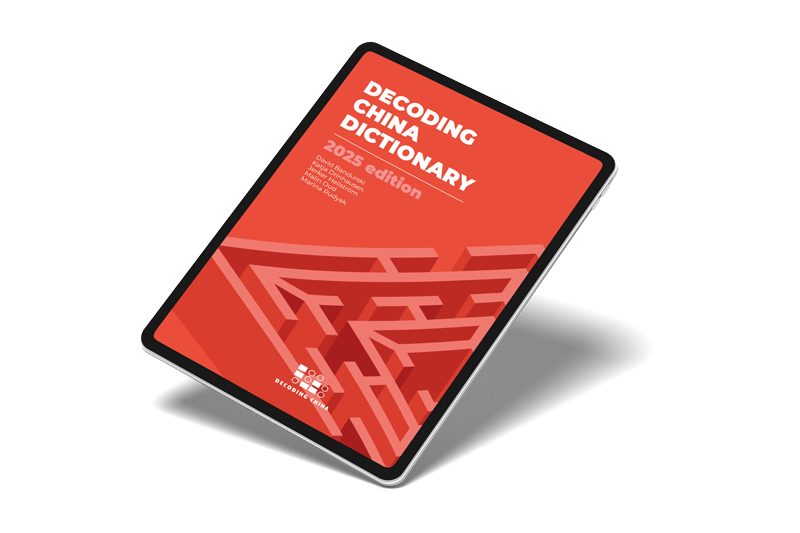
KEY TERM
Innovation
[ 创新 ]
[ 创新 ]
Innovation

Brief
Innovation means the creation and adoption of new ideas, approaches or products. The UN views scientific and technological innovation as key for economic growth and sustainable development, offering potential solutions for global challenges such as inequality, food security, or climate adaptation. The UN also highlights the benefits of “social innovation” by improving governance and empowering civil society. In comparison, national innovation agendas often place a stronger emphasis on economic competitiveness and military strength.
Innovation is central to the CCP’s vision of modernising its economy and managing society. Decades of policy plans, investment, and private sector competition have made China a global innovation leader, technology exporter, and standard-setter. The state directs resources to applied innovation in emerging technologies and strategic sectors, including military and security applications. Indigenous innovation (自主创新) is gaining importance as the country strives to decrease dependencies and cement its position as a science and technology power.
Analysis
Under Xi Jinping, innovation has become one of the most prominent terms in the CCP’s vocabulary. It is seen as crucial for China’s modernisation and shift towards a new development model focused on digitisation, automation and cutting-edge industries. Party documents and media regularly highlight the need to lead the next industrial revolution. This push is fuelled by fierce technological competition with the US and increasing restrictions of high-tech exports to China, especially on advanced chips and chip-making equipment.
The concept of innovation has been part of CCP discourse since the 1940s, historically tied to self-reliance and renewal. In the 1950s and ’60s, it signified progress in science and production. From the early reform period in the 1980s and 1990s, China’s industrial policy aimed to catch up with developed economies, shifting from production efficiency to advances in electronic goods and information technology. In the 1990s and 2000s, economic policy and regulations required foreign investors to transfer technology to help build China’s own innovation capacity. Research centres and companies were encouraged to “transfer, digest, absorb, and re-innovate” foreign technologies.
Xi has promised to move Chinese industries to the high-end of the global value chain. The 2015 “Made in China 2025” plan aimed to make the PRC a global leader in key manufacturing sectors. Since 2020, the ambition has shifted to leading technological breakthroughs. The government provides national research grants, state guidance funds and other incentives to promote research and development in emerging technologies and strategic sectors such as green tech, biotech, quantum computing, AI, and new telecommunication standards. The military-civil fusion policy and the use of technology in public security and surveillance are also major drivers of technological innovation.
China has defied assumptions about the importance of a liberal political environment for innovation. In 2024, it ranked 11th out of 133 economies on the Global Innovation Index and is a leader in new patent registrations. China’s private sector has a multitude of companies pursuing innovation – often in fierce competition. From Huawei to TikTok, Temu, and DeepSeek, Chinese technology companies have become globally renowned champions. A regulatory crackdown in the early 2020s has ensured that private sector efforts largely align with national strategic goals. Innovation will remain central in the upcoming 15th Five-Year Plan (2026-2030), with an emphasis on foundational research and talent development to boost indigenous innovation.
Universities, enterprises and investors across the world are now keen to partake in China’s technological advances. The government shares benefits while protecting China’s edge. The PRC frames its technology exports as a global public good and strives to promote the Belt and Road Initiative as a “road of innovation,” alongside a host of bilateral projects. China is also active in various UN initiatives, often focusing on the green transition such as in the SDGs Innovation Lab in Suzhou. The leadership in innovation gives China a powerful voice in the contested space of setting international standards for telecommunications, internet and AI governance.
Innovation also features frequently in the Party’s discourse on governance. From Mao to Xi, leaders are credited with adapting Marxist ideology and political practices to China’s conditions and changing times. Xi has tasked the Party with “innovating social governance” to ensure stability and prosperity. This notion of social innovation entails using new digital tools for both public service provision and political control, making such efforts a part of official research and innovation agendas.
How to cite the Decoding China Dictionary:
The Decoding China Project (eds.) The Decoding China Dictionary (2025 ed.), 2025. Berlin: The Decoding China Project. Available from: https://decodingchina.eu/.
Research related to this term was supported by:

Related Articles That Might
Interest You






